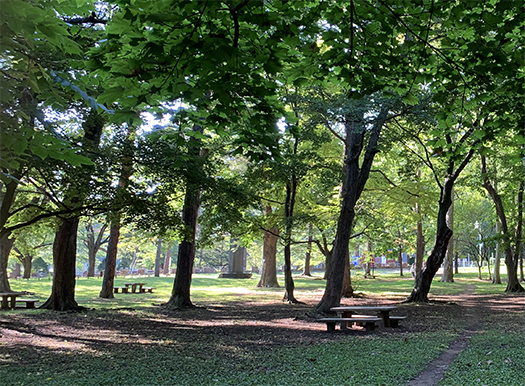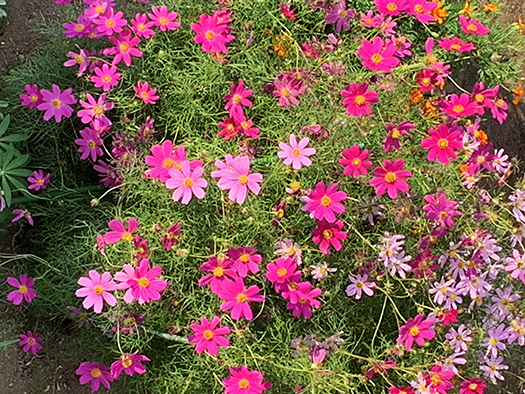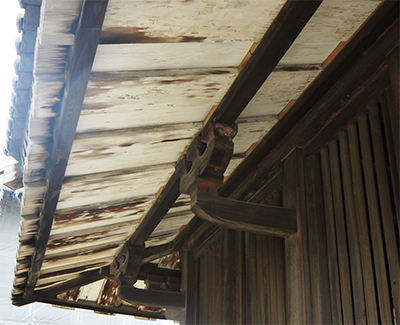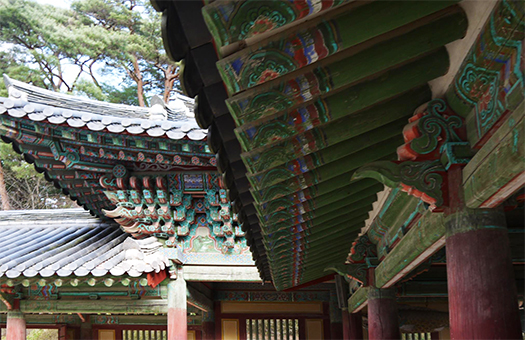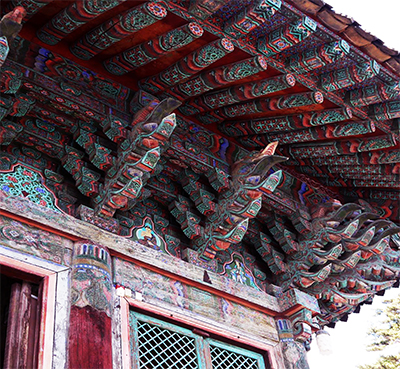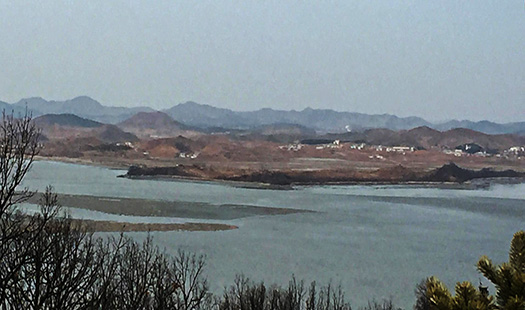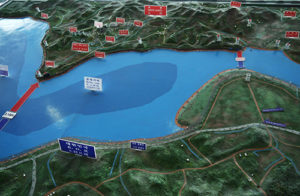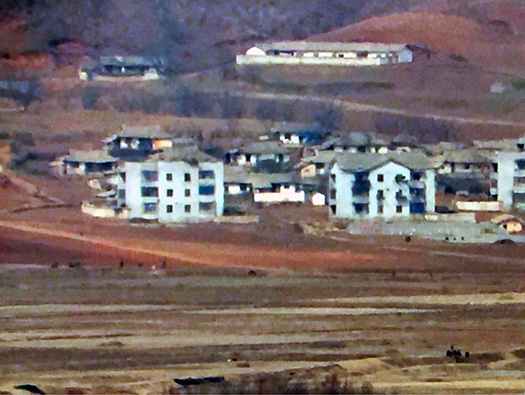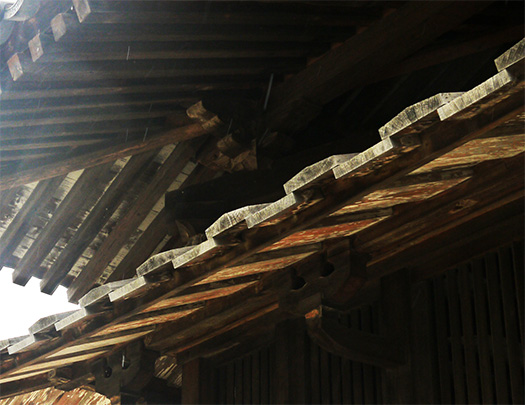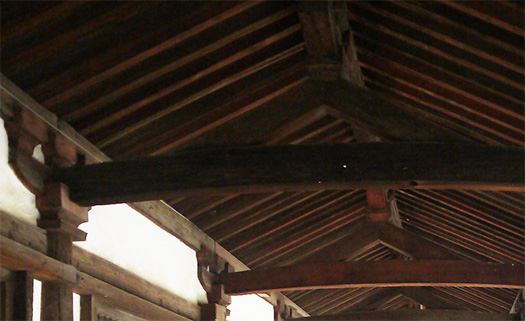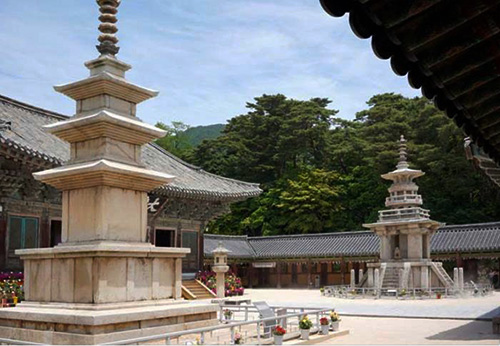
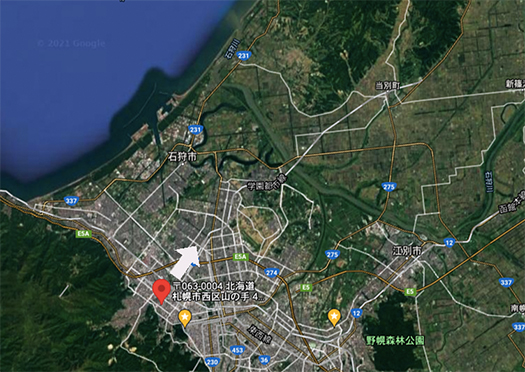
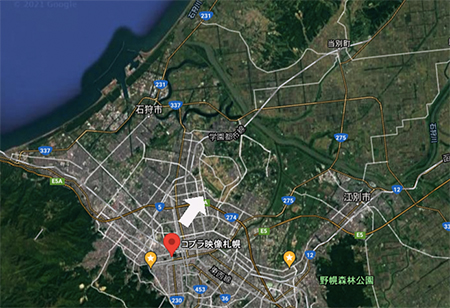
人それぞれに「この世で見る景色」の原風景ってあるのではと思っています。
・・・変な言い方でまことに恐縮ですが。
人間が生きている間、感覚する世界認識で視覚は基底的・根源的。
「あ、この風景・・・」と懐かしい視野感覚ってあると思います。
わたしの場合、窓から見る外の景色「雲のカタチ」が大きい。
一番上の写真はわが家から見える遠景の雲であります。
その下のMapはGoogleのわが家位置を示していて、白い矢印が視線方向。
で、その下の同図は3歳から15歳まで少年期を過ごした家からの視線方向。
どちらもGoogleMapで35度真北から東方向に振れています。
視線としては東北東に向いているといえるでしょう。
そうすると視線の向かう先は石狩川の流れに正対するような方向になっています。
現在のわが家は住み始めてからもう30年になります。
この土地を購入したとき、「あ、たぶん昔住んでいた家と同方向だな」と
おぼろげながら認識していて、その方向が視界が開けている、
視界を遮る建物がなく中学校のグランドに面していることを
薄々は気付きながら、内心で大いに喜んでいた記憶があります。
で、職住一体の住宅を新築し眺望をみたときに「帰ってきた」感があった。
もちろんはじめてこの場所からの眺望を見たのですが、
視覚体験の基底にある風景との同質性が強く認識できたのです。
それが、毎日見ることができる窓外の風景、それも「雲のカタチ」でした。
一番上の写真で見る地を這うような雲。
長時間見ていると、この雲はゆっくりとカタチを変えながら動いていくのです。
物心ついた子ども時代からこういう雲のカタチ、動きを見ていた。
雲って大気中で発生する水蒸気が冷やされてできるのが基本でしょう。
そうするとこの見えている雲は石狩川の水蒸気が作っていると気付く。
その雲が一種独特の「動き」を見せるのは川の水流と関係するとも気付ける。
物心ついた幼年・少年期、ぼーっと窓外を見ていた・・・。
その雲がまるでゴジラのようにゆっくりと、あるいは激しく動いていく。
四季折々、その様子が千変万化する。
で、ある時期からこの光景がかけがえのない風景として刷り込まれた。
自分の住む場所から見える景色を、自分で決定することができるのが、
家づくりのある重要な要素なのかもと思っていた。
それが人生の半ばでまるで「邂逅」するかのようにめぐり会うことができた。
別にどういう関わりもない自然現象であるけれど、
一個人としては面白く運命的な部分かもと思っております。
雲に、その生成にこだわりを持つって変なんですが(笑)
どうもわたしには格別なものに思えるのです。ヘンですね〜。
English version⬇
[Private Sapporo people original scenery “clouds over the Ishikari River”]
I think that each person has the original scenery of “the scenery seen in this world”.
… I’m really sorry to say it strangely.
Vision is fundamental and fundamental in the world recognition that human beings sense while they are alive.
I think there is a nostalgic sense of vision, “Oh, this landscape …”.
In my case, the view from the window, “the shape of the clouds,” is large.
The top photo is a distant cloud seen from my house.
The Map below it shows Google’s home location, with the white arrow pointing in the direction of your line of sight.
And the figure below is the direction of the line of sight from the house where I spent my boyhood from 3 to 15 years old.
Both are swinging 35 degrees from true north to east on Google Map.
It can be said that the line of sight is facing east-northeast.
Then, the destination of the line of sight is in the direction facing the flow of the Ishikari River.
It’s been 30 years since I started living in my current home.
When I bought this land, I said, “Oh, maybe it’s in the same direction as the house I used to live in.”
I am vaguely recognizing, and the view is open in that direction,
That there is no building that blocks the view and that it faces the ground of the junior high school
I remember being very pleased with my inner feelings, even though I was faintly aware of it.
So, when I built a new house with integrated work and housing and looked at the view, I felt that I was “returned”.
Of course, I saw the view from this place for the first time,
I was able to strongly recognize the homogeneity with the landscape that is the basis of the visual experience.
That was the scenery outside the window that I could see every day, which was also the shape of the clouds.
Clouds that crawl on the ground as seen in the top photo.
If you look at it for a long time, this cloud will slowly change its shape and move.
I have been watching the shapes and movements of these clouds since I was a child.
Basically, clouds are formed by cooling the water vapor generated in the atmosphere.
Then, I notice that this visible cloud is made by the water vapor of the Ishikari River.
I also notice that the fact that the clouds show a kind of unique “movement” is related to the water flow of the river.
When I was a child and a boy, I was staring out the window.
The clouds move slowly or violently like Godzilla.
Every season, the situation changes.
So, from a certain time, this scene was imprinted as an irreplaceable landscape.
You can decide for yourself what you can see from where you live.
I thought it might be an important factor in building a house.
I was able to meet them in the middle of my life as if they were “encountering”.
It’s a natural phenomenon that has nothing to do with it,
As an individual, I think it is an interesting and fateful part.
It’s strange to be particular about the generation of clouds (laughs).
It seems to me something special. It is strange~.
Posted on 9月 26th, 2021 by 三木 奎吾
Filed under: こちら発行人です, 住宅マーケティング | No Comments »


